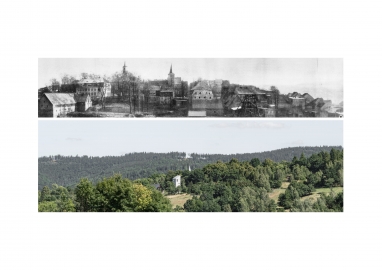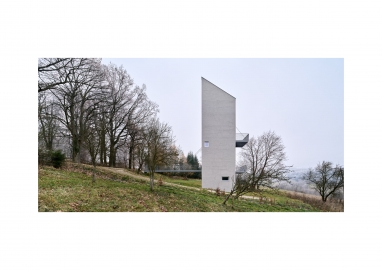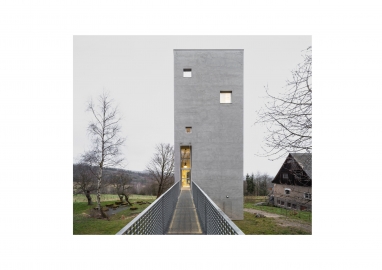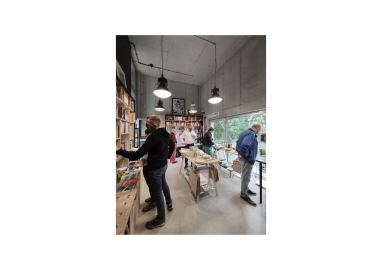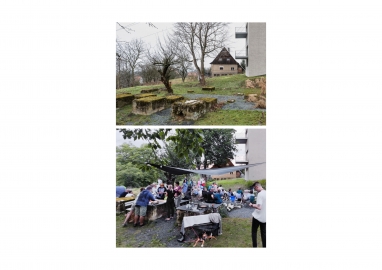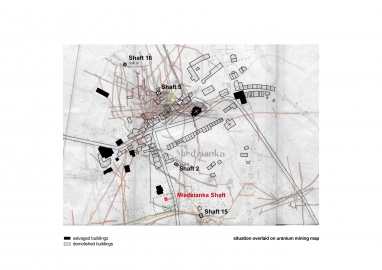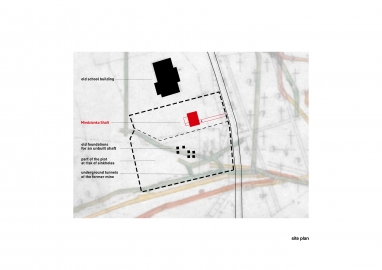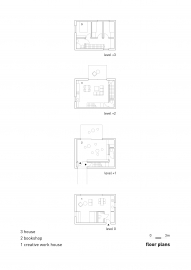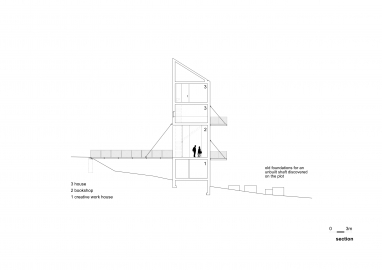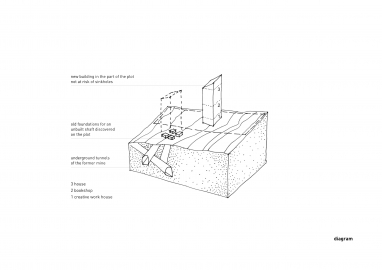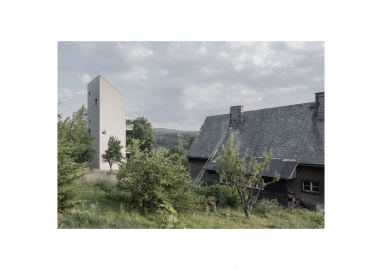Miedzianka Shaft
The project was originated in Miedzianka, a town that had sunk underground. After WWII, uranium was plundered there to construct an atomic bomb. Beneath emerged a chaotic network of tunnels. Mining shafts sprouted up in between residential buildings. The project draws on this history, brings the community together, and offers artistic activities.
Today virtually deserted, Miedzianka was once a lively German town. The former Kupferberg had been a copper mining centre for centuries; after the Second World War it fell within the borders of communist Poland, and the Russians discovered uranium deposits there. From the early 1950s to the 1970s, more mine shafts were built between the buildings where people still lived in order to secretly carry out looted mining operations. In the 1970s, parts of the city were so criss-crossed by underground tunnels that some buildings began to collapse. During this time, people were evicted from there. What was left of the town was demolished and Miedzianka virtually disappeared. The whole story, which was a mystery for a long time, was described 40 years later by a Polish writer and so captivated the investors - art lovers - that they decided to move their entire lives there.
During an on-site inspection on the plot, we discovered mysterious stone blocks which, when superimposed on historical maps of mining tunnels, turned out to be the foundations of a planned and never realised mine shaft. This prompted the idea to refer to the vertical form of the former shafts, while limiting interference with the site. We located the building on a part of the plot not at risk of collapse. It is a hybrid of several functions. The most important is the art bookshop, which is accessed from street level by an openwork steel footbridge. Below, in the ground floor, there is a creative work house for artists, at the very top a small 2-storey flat for the owners. The Miedzianka Shaft (for this is how the building was named) soon began to function in the consciousness of the local community as a meeting place and a link between people and their history. Hitherto hidden memories have found a home in the shaft. Family heirlooms are brought here, which in a spontaneous and uncontrolled way began to create the character of the interiors. This physical presence of the building has unexpectedly also triggered its virtual life, activating social media users associated with the place.
The building is small, with each of the four levels being around 30m2. The small footprint of the building has allowed us to preserve the original, somewhat wild character of the plot. The preserved stone blocks not only bear witness to the history, but at the same time provide a venue for open-air artistic gatherings. The simple form of the building is a reference to industrial architecture. We used durable materials to finish the shaft so that, because of its height, it will not require costly and energy-intensive maintenance for decades. The facades are covered with micro-cement and the roof with a durable TPO membrane. The steel hanging terraces and entrance footbridge are natural extensions of the small interior spaces. To support them, we used ropes and tie rods typical of industrial architecture. This turned out to be simple and inexpensive, as did the arrangement of the raw concrete interiors, which was carried out by the owners themselves. The low budget of around EUR 130,000 was crucial.

